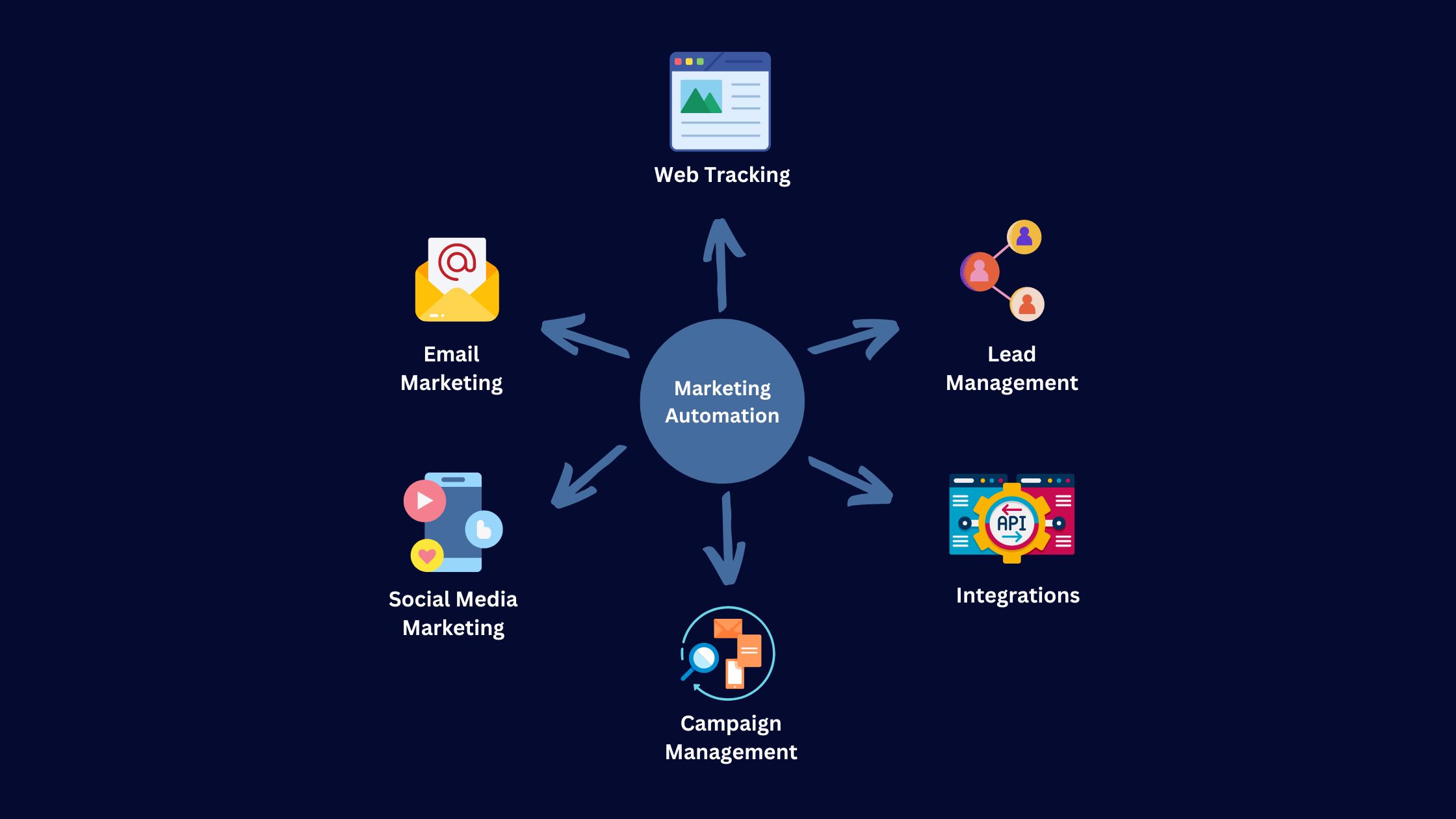Top 10 Marketing Strategies for B2B marketing

Some businesses associate B2B marketing tactics with direct and outbound techniques—marketing messages sent directly to clients or prospective purchasers. The goal of this strategy is to be captivating and convincing enough that the audience responds to the offer and carefully considers your services. Techniques like these should be on your marketing tool belt. However, the world of B2B marketing techniques has broadened, and professional services buyers’ behavior has altered. Buyers nowadays are nearly as likely to resort to search engines for solutions to work-related problems as they are to approach a colleague or friend for a recommendation.
This changing economy has expanded the spectrum of B2B marketing methods available to you. So, being competitive today entails utilizing a wide range of methods.
However, you may wonder which ones are necessary for success in today’s hyper-competitive climate. In this post, we will look at ten key B2B marketing methods that will help your company not only keep up but also get ahead. First, let’s define B2B marketing and provide instances of how it works in practice.
Also Read, From CA to CFA: Anil Ghelani’s Versatility
What is B2B Marketing?
B2B marketing encompasses a set of strategies and methodologies employed by companies to efficiently engage, nurture, and promote their products and services to other businesses. In this domain, the target buyers typically hold positions in the C-suite or at the directorial level within their organizations. This sets B2B marketing apart from other marketing approaches.
One notable divergence in business-to-business transactions lies in the prolonged sales cycles frequently observed. Purchasers seek solutions addressing intricate challenges specific to their businesses. Hence, effective B2B marketing faces the challenge of delivering pertinent, valuable, and compelling content that captures the attention of potential buyers across various stages of interest. Let’s delve into practical illustrations to understand this concept better.
B2B Marketing Examples
B2B marketing simplifies into a three-tiered funnel, each stage targeting specific audience segments and requiring tailored marketing techniques.
1. Top tier: Focuses on a broad audience unaware of your offerings, aiming to boost brand visibility and attract potential leads like buyers, referrals, or influencers. Strategies involve expert participation in industry events or publishing articles in relevant publications to increase visibility, not immediate sales.
2. Middle tier: Often overlooked, emphasizes nurturing and engaging potential buyers over time instead of rushing into a sales pitch. Strategies include providing insightful resources like webinars for audience interaction.
3. Bottom tier: Indicates when a potential buyer signals readiness to engage, marking a genuine B2B marketing lead. Focus shifts to arming sales representatives with necessary materials for effective communication.
Having outlined the core components of B2B marketing and the significance of addressing all three tiers of the funnel, let’s now delve into ten fundamental B2B marketing strategies that can propel your firm ahead in a competitive landscape.
Also Read, Kinjal Parekh: An Avid Reader and Finance fanatic!
Top 10 B2B Marketing Strategies
1. RESEARCH
Thorough research forms the foundation of modern marketing endeavors. Whether it’s market or brand research, conducting detailed and scientific studies is pivotal for making informed decisions. This approach provides an unbiased framework for marketing activities and establishes essential benchmarks for result measurement. Engaging in research offers a deeper understanding of your clients, empowering you to better cater to their needs. It also offers insights into the performance of your business processes, highlighting successful areas within your firm and aiding in refining offered services.
The impact of research is evident. Our studies demonstrate that firms engaging in systematic research on their prospects and clients experience notable growth, up to three to ten times faster, and achieve up to twice the profitability compared to peers neglecting research initiatives.
2. REFERRAL MARKETING
The nature of professional services referrals has shifted, which has significant consequences for your B2B marketing approach. Our research on referral marketing methods in professional services has uncovered an important new aspect of the industry: more than 81.5% of providers have received a reference from someone who was not a client.
Where do these recommendations come from? The vast majority are based on a firm’s reputation for a particular area of competence.
By combining content marketing with the other methods on this list, you can create a brand with a worldwide reputation for specialization in your field – and a knowledge of your competence even among consumers who haven’t directly worked with you. Referrals and new business might result from brand recognition.
Also Read, Charles Koch: Championing Free Markets and Humanitarian Causes
3. A HIGH-PERFORMANCE WEBSITE
In today’s professional services landscape, your firm’s website is a critical asset, transcending the notion of a mere digital billboard or brochure, as some previously imagined. It serves as the key center of your internet presence, providing a plethora of information that highlights your market knowledge.
The importance of your website stems from its role in increasing visibility. Prospective clients mostly look online for service providers, thus finding your firm’s website is critical to obtaining their business. Furthermore, your website serves as a platform for demonstrating your company’s expertise and establishing a recognizable presence in the industry. Our research emphasizes the importance of a professional services firm’s website, demonstrating that 80% of people rely on websites to evaluate service providers, making it the most often used source of information.
As new visitors interact with your website, compelling instructional content and targeted offers promote progressive engagement, directing qualified leads to your services. This method of nurturing leads through content corresponds to the previously stated funnel graphic. Another important factor to consider is the style of your website. Web and visual design have a huge impact on audience perceptions, aid in brand memory, and effectively differentiate your firm in the market. The power of design to captivate audiences is sometimes underestimated, creating an opportunity for businesses to stand out and deliver their message.
4. SEARCH ENGINE OPTIMIZATION (SEO)
For your website to be effective, your target audience must be able to locate it. This is where search engine optimization comes into play. This is such an important component of the Internet marketing puzzle that high-growth organizations rate it as a very successful digital marketing tactic available to them in our research. In one of our most recent editions of the High Growth Study, we discovered that higher degrees of SEO maturity seemed to correlate with a higher proportion of digital leads. This same study found a similar link between better SEO maturity and increased profitability, most likely due to the lower cost of generating digital leads.
5. SOCIAL MEDIA
We’ve got additional proof that social media is here to stay for professional services firms if you need it. According to our research, more than 60% of customers explore new service providers on social media, making it a more popular source of information than traditional referrals and recommendations.
Even the nature of referrals has shifted as a result of social media. According to a recent referral marketing study, 17% of expertise-based referrals are created as a result of social media interactions. Simply put, social media expands the reach of your reputation, experience, and material. It enables you to network and interact with important connections and influencers while also monitoring your brand through social listening.
Also Read, Bill Gurley: The Man who backed OpenTable, Yelp, GrubHub, Twitter, Zillow, and Uber
6. ADVERTISING
There are several platforms where your company can efficiently advertise:
- Websites and publications in the industry
- Social networking sites
- SEM (Search Engine Marketing) – Google Ads, Bing Ads, and Yahoo Ads

However, it is critical to choose techniques of advertising that are most suited to professional services. LinkedIn, retargeting, and other industry-specific advertising are the most effective because they allow you to specifically target relevant industry audiences, resulting in more conversions, greater click-through rates, and reduced cost per download. Search engine marketing (SEM), on the other hand, is frequently more expensive and difficult to target for professional services. Similarly, Facebook advertising is less effective since professional services buyers use the platform at a lesser rate than other social media networks.
However, keep in mind that each of these advertising types has numerous variations. Depending on the budget, ad objective, targeting, and industry specialization, professional services firms may find them more or less successful.
7. TESTING AND OPTIMIZATION
We began with study, but our scientific method is far from complete. Testing and optimization enable you to iterate your marketing efforts and make continuous decisions that are based on hard data rather than intuition.
Testing and optimization are your constant guides, just as research is the foundation of your marketing. You should never stop testing and tweaking your marketing campaigns. This includes the following:
A/B testing of emails and landing pages- Learn which of two emails or landing pages converts consumers more successfully based on variations in wording, design, or other factors using A/B testing tools (such as Optimizely or Unbounce). Email and landing page rendering- Use tools like Email on Acid to test how emails will appear and feel on different devices and platforms.
8. NICHE-DRIVEN STRATEGY
Specialization and specialized targeting are two of the most essential commercial decisions you can make. Our research has repeatedly demonstrated that the fastest-growing companies are typically specialists in a narrowly defined area. This should be an area of the industry that you are intimately familiar with, one in which you can establish yourself as an undisputed expert and leader. Specialization simplifies all of your marketing efforts because it defines exactly what you do and instantly distinguishes you from the competition. A specialization is a distinguishing feature that stands out.
9. MARKETING AUTOMATION, CRM, AND LEAD NURTURING
Marketing automation automates manual work by combining numerous Internet marketing channels into a centralized system for campaign planning, management, and evaluation. Choosing the correct marketing automation software is critical for an efficient solution, as it must fit with your firm’s size, complexity, and scalability requirements.

Customer Relationship Management (CRM) solutions are also useful for recording and organizing opportunities and client information. It maintains organization and connectedness throughout expanding operations by acting as a centralized database for client interactions and information that is available across departments. However, lead nurturing is still important outside of CRM. Lead nurturing entails utilizing your website and email marketing. Analytics-driven email marketing enables bespoke offers for different buyer roles at different phases of their purchasing process. Drip email campaigns gradually engage and educate portions of your audience with relevant content and offers over time.
Also Read, How Elon Musk Regained His Spot as the World’s Richest Man with a Tesla Stock Surge
10. ANALYTICS AND REPORTING
Similarly, to successfully measure results, it is necessary to analyze the appropriate metrics. You will require tools to capture precise data on all of your activities, from your website to social media to SEO.
Google Analytics is a must-have tool for tracking and analyzing website traffic. Moz can assist you in researching and improving your SEO results, whereas apps such as Hootsuite provide thorough social media data. Analytics and testing allow you to properly grasp what is and is not working. Accept and utilize them. They will assist you in transforming your marketing activities from an art form to a science.
The main thing is not to become complacent or comfortable. To remain competitive, your company must regularly evaluate and enhance its B2B marketing efforts. The online marketing world is growing at a rapid pace. Still, organizations that successfully collect and use data on their performance – across a wide range of marketing efforts – are well positioned to win.



